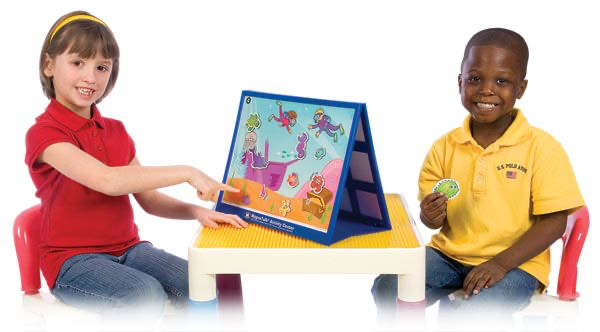BY: admin
Uncategorized
Comments: No Comments
Barrier Games
By Michael Audas – Speech Pathology
 What is a barrier game?
What is a barrier game?
Barrier games are all about helping children to understand that other people do not necessarily or automatically have access to their internal mental states. There are a wide variety of barrier games commonly utilised in therapy, but the basic premise is that two players will sit across from one another, with a barrier intervening between them, and attempt to work towards some kind of common goal—think Battleship, but with a cooperative, rather than competitive, goal.
The fact that the two players cannot see another means that they have rely on communication in order to reach their common goal. If they are trying to draw the same picture, for instance, they will need to describe exactly what lines, colours, and shapes they are utilising, and where they are marking them on the page, in order to wind up with reasonable amount of parity. Players soon learn that they cannot simply state that they’re going to draw a rabbit and assume that it’s going to look the same as the other player’s rabbit, or that it even necessarily be located in the same place on the page.
Barrier games, by their very nature, require a greater-than-usual degree of precise, and specific language. This makes them an excellent tool for developing a child’s language, and to build their capacity to communicate in a clear and concise way.
Benefits of barrier games
Barrier games are suited to the development of the following skills:
- Listening to, and giving, directions
- Requesting clarification of information that one has not understood
- Comprehensiona and expression of a range of concepts
- Narrative formulation and expression
- Expressing and comprehending vocabulary
- Using describing words: e.g., adjectives, adverbs, and prepositions.
Try it at home
- Provide each child with a piece of paper, as well as textas, pencils, or crayons.
- Have one child draw a picture and then describe it to his or her peer.
- The other child listens to the description and then tries to draw the same picture on their page.
- The children compare the pictures at the end and describe any differences they notice.
- You can also try asking them about how a particular difference came about: e.g., did the instruction pertaining to that detail not include a location word.
- Have the children switch roles.
- You can simplify this task—particularly for younger children—by giving them colouring pages instead. This way, the children only have to attend to the different colours that they are using.
